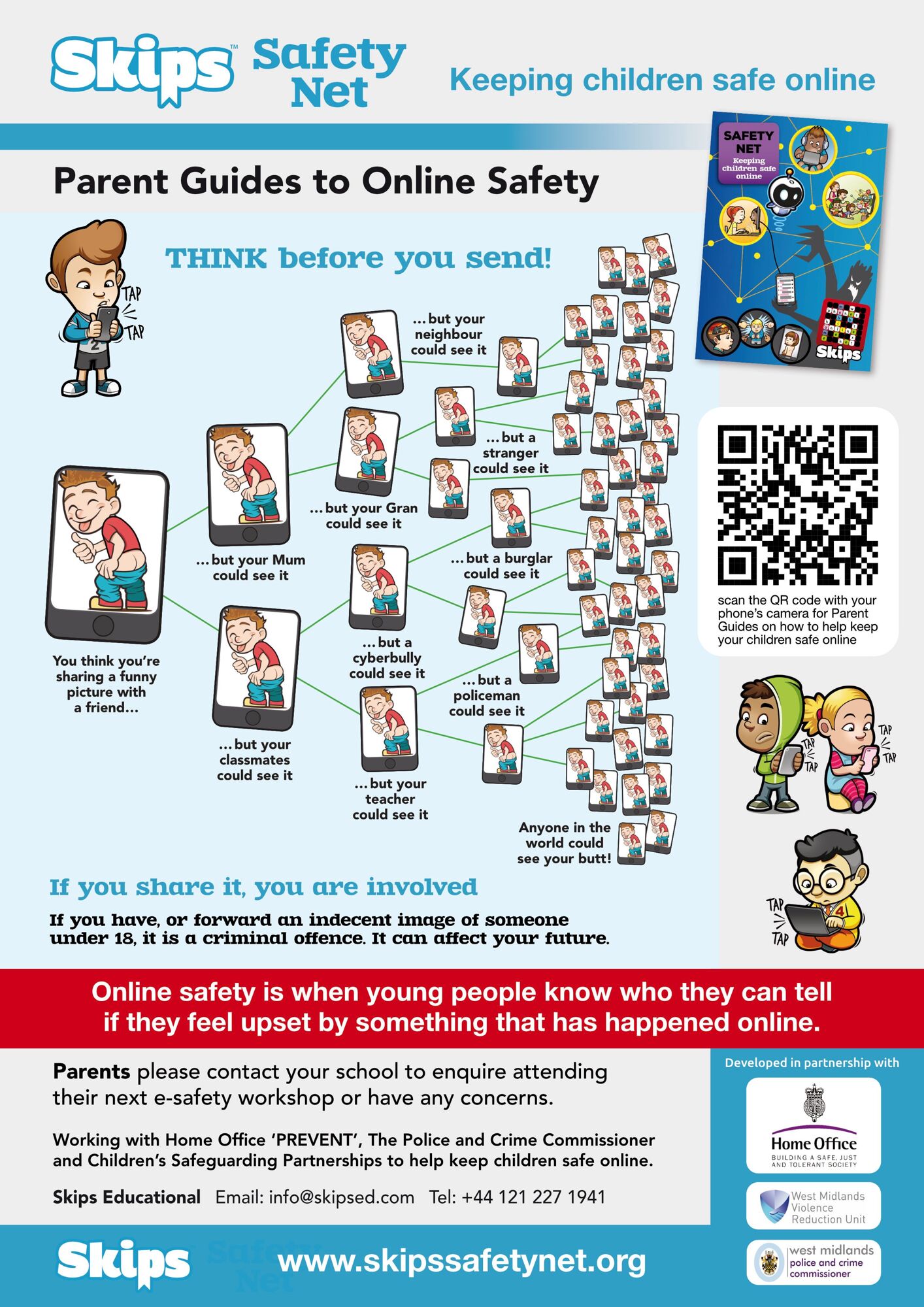eSafety
Internet Matters.org
Keep Children Safe Online: Information, advice, support - Internet Matters

https://safetynet.skipseducational.org/parent-guides/
The presentation "A parents' guide to online safety" that was provided by SWGFL on 30 January 2020 and is available here.
The internet is an incredible place - students can use it to connect, make friends, learn and play. At Chailey School we believe that the school and parents & carers have a collective responsibility to help our children to stay safe online.
We need to understand what our children are doing and what the risks are so we can help them learn ways that they can take care of their own safety and security.
In turn they'll be able to navigate a safe path through an ever-changing virtual world whilst they are using technologies such as mobile phones, online gaming and websites to experience a wide range of opportunities and situations.
Use of online resources and the school's online safety policy
Online social interaction and learning opportunities are greatly beneficial. Internet use is part of the curriculum and a necessary tool for the school community but it can occasionally contain dangers and risks. So as a school we endeavour to develop the skills and attitudes that equip our students for our increasingly technological society.
To do this we all have to work within a framework that allows for safety and security whilst raising awareness of issues that affect our school and the wider community and our Online (E-Safety) policy is available via our page link on the right of this page.
Keeping up to date
Keeping up to date with the latest risks can be challenging so the links to sites on the right of this page include some useful points of reference.
- The UK Council for Child Internet Safety has produced a guide for parents on keeping their children safe online.
- Childnet International includes advice and information for children at Secondary School that is a great way to start a conversation with the whole family about the use of the Internet.
- Ideas to encourage young people to spend time away from technology can be found on the Action for Children website.
- The NSPCC through a national programme with O2, has some invaluable tools and advice
- General advice is available at the Better Internet For Kids website
- Harmful content can be reported via the Internet Watch Foundation or the Report Harmful Content websites
Top tips
The Child Exploitation and Online Protection (CEOP) Command is part of the National Crime Agency. It has created the ThinkUKnow website that includes the following top tips:
- Be involved in your child's online life: for many of today's young people there is no boundary between the online and offline worlds. Young people use the internet to socialise and grow and, just as we guide and support them offline, we should be there for them online too. Talk to them about what they are doing because if they know you understand they are more likely to approach you if they need support
- Watch Thinkuknow films to learn more: the Thinkuknow website has films and advice for children up to the age of 16. Children may have seen these at school but they can also be a good tool for parents and carers to find out more about what young people do online and some of the potential risks
- Keep up-to-date with your child's development online: be inquisitive and interested in the new gadgets and websites that your child is using. It is important that as your child learns more, so do you
- Set boundaries in the online world just as you would in the real world: think about what your child might see, what they share, who they talk to and how long they spend online. It is important to continually discuss boundaries with children so they evolve as your child's use of technology does
- Know what connects to the internet and how: nowadays even the TV connects to the internet. Your child is likely use all sorts of devices and gadgets so it is important to make sure you are aware of which ones can connect to the internet, such as their phone or games console. Also, find out how they are accessing the internet (e.g. is it your connection or a neighbour's wifi?) since this will affect whether your safety settings are being applied
- Consider the use of parental controls on devices that link to the internet: parental controls are not just about locking and blocking, they are a tool to help you set appropriate boundaries as your child grows and develops. They are not the answer to your child's online safety but they are a good start and are not as difficult to install as you might think. Service providers are working hard to make them simple, effective and user friendly. There's a useful step-by-step available on the Internetmatters.org website
- Emphasise that not everyone is who they say they are: make sure your child knows never to meet up with someone they only know online because people might not always be who they say they are. Make sure your child understands that they should never meet up with anyone they only know online without taking a trusted adult with them
- Know what to do if something goes wrong: just as in the offline world, you need to be able to help your child when they need it. Therefore, it is important to know when and how to report any concerns.
